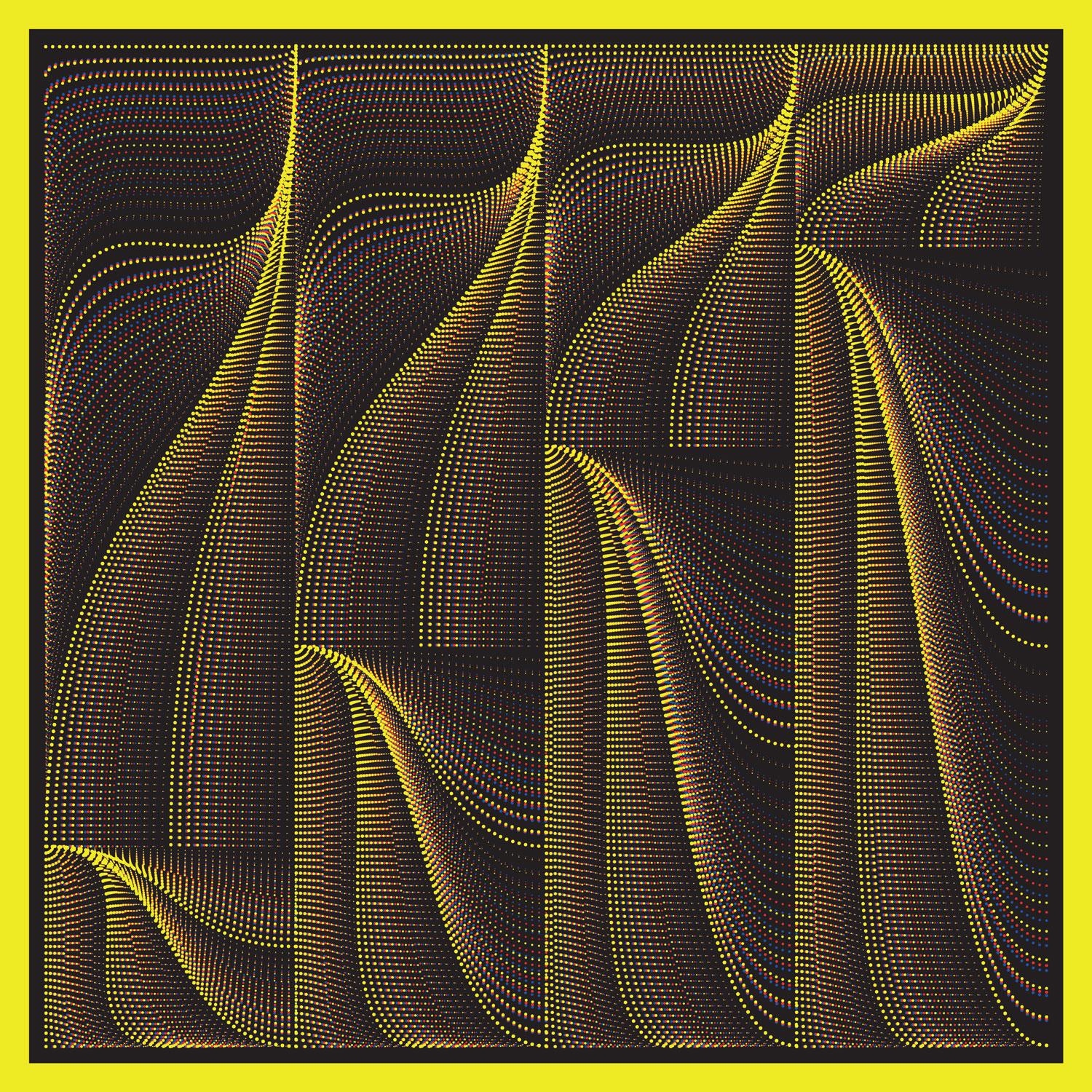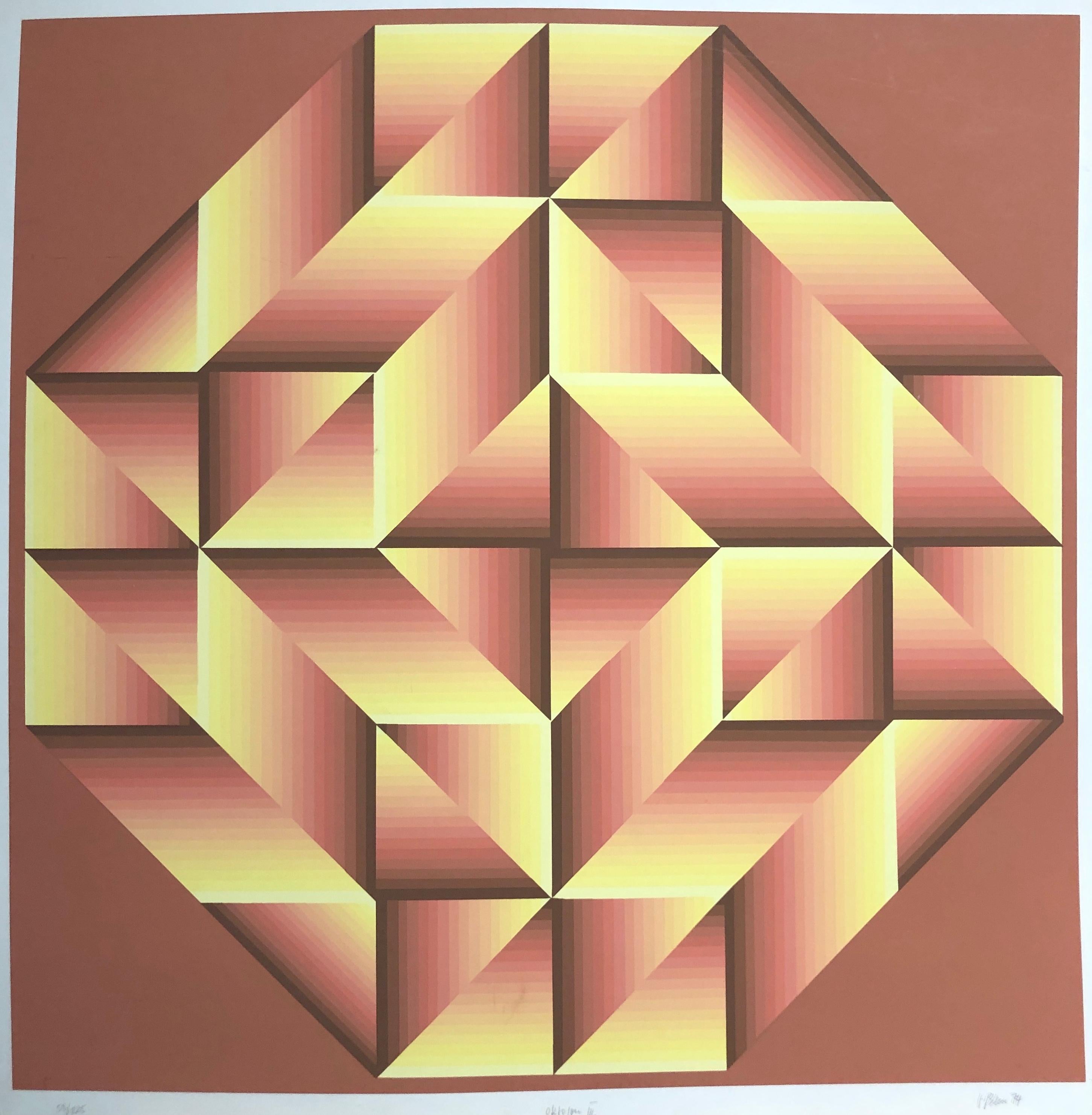Julio Le ParcJulio Le Parc ( 1928 ) – hand-signed serigraphy on Fabriano paper – 19831983
1983
About the Item
- Creator:Julio Le Parc (1928, Argentinian)
- Creation Year:1983
- Dimensions:Height: 19.69 in (50 cm)Width: 13.78 in (35 cm)
- Medium:
- Movement & Style:
- Period:
- Condition:excellent conditions.
- Gallery Location:Varese, IT
- Reference Number:1stDibs: LU1938213421212
Julio Le Parc
Julio Le Parc is an Argentinian artist best known for his pioneering works of Kinetic Art.
Depicting labyrinthine spaces using optical illusions and mirrored surfaces, many of Le Parc’s prints, watercolor paintings and other works predate the Op Art movement. “I wanted to leave aside sentimentality to allow accessibility to people who had no history, to involve them,” he once reflected. “I was attacking the static nature of artworks. More importantly, I was attacking the idea of the extraordinary artist.”
Born on September 23, 1928 in Mendoza, Argentina, Le Parc attended the School of Fine Arts in Buenos Aires before moving to Paris in 1958. Le Parc along with Yvaral reacted to the expressive approach of Tachisme and CoBrA artists like Karel Appel and Jean Dubuffet, by creating a controlled sensorial experience for the viewer.
In 1966, Le Parc received the Grand Prize in Painting at the 33rd Venice Biennale. In 2016, Le Parc was the subject of his first solo museum exhibition in North America, “Form in Action,” which opened at the Pérez Art Museum Miami and included over 100 works. The artist currently lives and works in Cachan, France. Today, his works are in the collections of the Museum of Fine Arts in Houston, the Museum of Modern Art in New York, and the Tate Gallery in London, among others.
Find authentic Julio Le Parc paintings and prints on 1stDibs.
(Biography provided by Latin Art Core)
- ShippingRetrieving quote...Ships From: Varese, Italy
- Return PolicyA return for this item may be initiated within 14 days of delivery.
- Jesús Rafael Soto ( 1923 – 2005 ) – hand-signed Screenprint – 1971By Jesús Rafael SotoLocated in Varese, ITScreenprint in colors on paper, edited in 1971 limited edition of 175 copies signed in pencil by artist in lower right Edition: Denise Rene , with blindstamp image size: 42 × 42 cm s...Category
1970s Op Art Prints and Multiples
MaterialsPaper, Screen
- Carlos Cruz-Diez ( 1923 – 2019 ) – hand-signed Serigraphy on Arches paper – 1994By Carlos Cruz-DiezLocated in Varese, ITcolor serigraphy on Arches paper, edited in 1994 Limited Edition of 130 copies signed and dated in pencil by artist in lower right and numbered 83/130 lower left Paper size: 100 x 70...Category
1990s Op Art Abstract Prints
MaterialsScreen, Paper
- Jesús Rafael Soto ( 1923 – 2005 ) – hand-signed Screenprint – 1971By Jesús Rafael SotoLocated in Varese, ITScreenprint in colors on paper, edited in 1971 limited edition of 175 copies signed in pencil by artist in lower right Edition: Denise Rene , with blindstamp image size: 39 × 39 cm s...Category
1970s Op Art Prints and Multiples
MaterialsPaper, Screen
- Jesús Rafael Soto ( 1923 - 2005 ) - Composition - hand-signed serigraphy - 1970By Jesús Rafael SotoLocated in Varese, ITcolor serigraphy on paper, edited in 1970 limited edition signed in pencil by artist and numbered as: 178/190 in lower right paper size: 60 x 60 cm very good conditions, with strong ...Category
1970s Prints and Multiples
MaterialsPaper, Screen
- Sonia Terk Delaunay - Hand-Signed Color Silk-Screen, 1970Located in Varese, ITSonia Terk Delaunay ( 1885 - 1979 ) - hand-signed color silk-screen - 80 x 57 cm, 1970 Additional information: Material: Color Silk-screen on pape...Category
20th Century Abstract Prints
MaterialsSilk, Paper, Screen
- Anni Albers ( 1899 – 1994 ) – Double Weave – hand-signed Screenprint – 1985By Anni AlbersLocated in Varese, ITScreenprint on Fabriano paper , edited in 1985 Limited edition of 125 copies signed in pencil by artist and numbered as: 46/125 paper size: 68 x 68 cm ( 26 5/8 x 26 5/8 inch ) very good conditions Published by Fausta Squatriti, Milan A regular certificate of authenticity will be included Fast and Tracked shipping with express currier DHL Bibliography: The prints on Anni Albers Ref 95 Anni Albers ( 1899 – 1994 ) – Double Weave...Category
1980s Abstract Geometric Prints and Multiples
MaterialsPaper, Screen
- SLOWAVE (Yellow)Located in LILLE, FRSLOWAVE (Yellow) Signed and numbered screen print by Florian & Michaël Quistrebert. This edition has been done in 2021. Item is new, sold by the publisher. Available without frame....Category
2010s Op Art Abstract Prints
MaterialsPaper, Screen
- SLOWAVE (Green)Located in LILLE, FRSLOWAVE (Green) Signed and numbered screen print by Florian & Michaël Quistrebert. This edition has been done in 2021. Item is new, sold by the publisher. Available without frame. ...Category
2010s Op Art Abstract Prints
MaterialsPaper, Screen
- SLOWAVE (Red)Located in LILLE, FRSLOWAVE (Red) Signed and numbered screen print by Florian & Michaël Quistrebert. This edition has been done in 2021. Item is new, sold by the publisher. Available without frame. As...Category
2010s Op Art Abstract Prints
MaterialsPaper, Screen
- Bi-TupaBy Victor VasarelyLocated in Brussels, BEVASARELY “Bi-Tupa”, Genuine 1976 serigraphy, hand signed (lower right corner), and numbered 147/225 (lower left corner). Catalogue Raisonné: Pedro Benavides, ref 282, page 86. Sheet:...Category
1970s Op Art Abstract Prints
MaterialsScreen, Paper
- Victor Vasarely Screen Print Abstract, Geometric Squares Cubes HexagonBy Victor VasarelyLocated in Detroit, MIVictor Vasarely born in 1906 was a Hungarian-French artist, who is widely accepted as a "grandfather" and leader of the Op Art movement. Op Art is a form of abstract art that gives the illusion of movement by the precise use of pattern and color, or in which conflicting patterns emerge and overlap. Victor Vasarely and Brigit Riley are its most famous exponents. In its visual balancing act of color and movement from a flat plane to developed continuous flow “Untitled” is a complex arrangement of squares and colors that visually expand and contract. It is one of Vasarely’s most successful Op Art abstract works. The piece is signed on the lower right and number 20/150 on the lower left. The print is behind glass and matted. Vasarely was born in Pecs and grew up in Slovakia and Budapest, where in 1925, he took up medical studies. Abandoning medicine he turned to traditional academic painting at the private Podolini-Volkmann Academy. In 1928/1929, he enrolled at Sandor Bortnyik’s private art school widely recognized as Budapest's centre of Bauhaus studies. His studies concentrated on applied graphic art and typographical design. In 1929, he painted his Blue Study and Green Study. In 1930, he married his fellow student Claire Spinner (1908–1990). Together they had two sons, Andre and Jean-Pierre. Vasarely became a graphic designer and a poster artist during the 1930s combining patterns and organic images with each other. Vasarely utilized geometric shapes and colorful graphics, the artist created compelling illusions of spatial depth, as seen in his work Vega-Nor (1969). Vasarely’s method of painting borrowed from a range of influences, including Bauhaus design principles, Wassily Kandinsky, and Constructivism. In the late 1920s, Vasarely enrolled at the Muhely Academy in Budapest, where the syllabus was largely based on Walter Gropius’s Bauhaus school in Germany. After settling in Paris in 1930, Vasarely worked in advertising agencies to support himself as a graphic artist while creating many works including Zebra (1937), which is considered by some to be one of the earliest examples of Op Art. The artist experimented in a style based in Surrealism and Abstract Expressionism during the 1940s, before arriving at his hallmark checkerboard...Category
Mid-20th Century Op Art Abstract Prints
MaterialsPaper, Screen
- "Oktoqou III" 1974 OpArt Silkscreen Jürgen PetersBy Jurgen PetersLocated in Arp, TXJürgen Peters Oktoqou III 1974 Silkscreen 59/125 28.25"x28.25" unframed Signed, dated, titled, and print number across bottom in pencil. *Custom framing available for additional cha...Category
1970s Op Art Abstract Prints
MaterialsPaper, Screen






